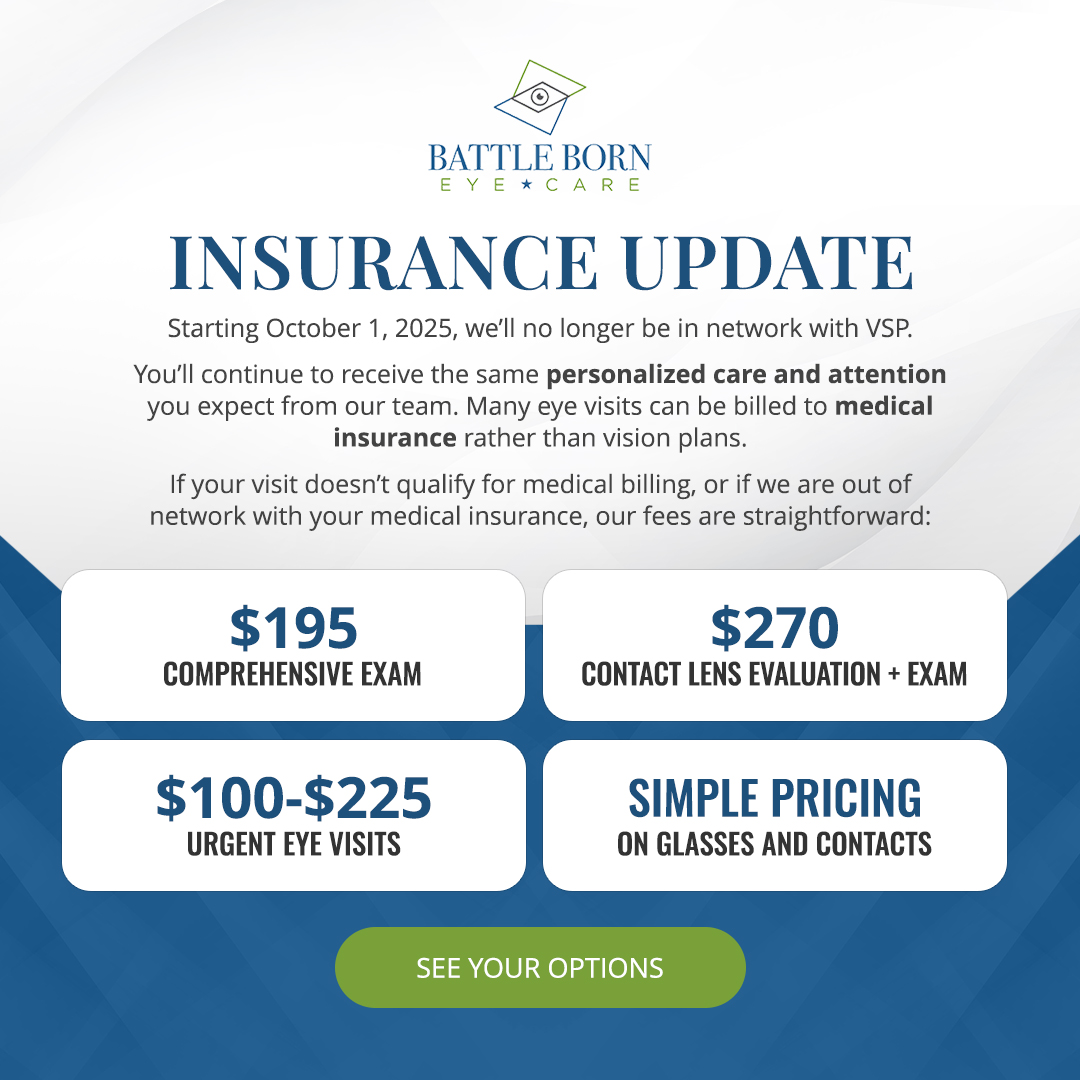Scleral Lenses for Keratoconus and Corneal Ectasia
The doctors at Battle Born Eye Care take tremendous pride in being one of the few practices in the area to offer custom vision solutions for our patients with keratoconus. In addition to making the diagnosis and monitoring progression, we have the skills and expertise to fit a wide variety of specialty and medical contact lenses to improve the vision and lifestyle of our patients.
Keratoconus is a progressive eye disease which causes the front surface of the eye (cornea) to assume an irregular shape. The cornea is normally a smooth, spherical shape like a bowl or saucer. Keratoconus causes a section of the cornea to bulge like a cone. This change in the surface often induces irregular astigmatism and causes a decline in vision. Patients will often experience blurred vision, ghosting or shadowing of images and glare. These visual distortions often cause patients to have difficulties driving (especially at night), reading and working on the computer. Typically, the larger the cone or the more irregular the cornea, the worse the patient’s vision and the more visual distortion they will have.
Corneal ectasia is a more general term to describe irregularities on the surface of the eye. Keratoconus is a specific type of corneal ectasia. Other types include Pellucid Marginal Degeneration and Terrien’s Marginal Degeneration. Ectasia can also be induced as a result of eye surgery such as LASIK (post-LASIK ectasia) and radial keratotomy (post-RK ectasia). All types of ectasia can cause visual distortions similar to keratoconus as described above.
While patients with mild keratoconus or ectasia may have good vision with eyeglasses and soft contact lenses, those with more moderate and severe cases often need specialty hard lenses to adequately correct their vision. These lenses often include small diameter hard lenses known as RGP (rigid gas permeable) and larger diameter hard lenses known as scleral lenses.
Many patients do very well with the smaller RGP lenses for mild and moderate cases of keratoconus or ectasia. The rigidity of these lenses can help correct more moderate amounts of irregular astigmatism and can provide enhanced vision which eyeglasses and soft contact lenses cannot provide. One of the drawbacks of these lenses is decreased comfort due to the lens riding on the surface of the cornea. In addition, these lenses can sometimes move excessively or fall out of the eye unexpectedly. RGP lenses can also cause complications with certain types of ectasia such as those who have had RK surgery. In these cases, scleral lenses are often a much better option.
Scleral lenses have been nothing short of a breakthrough. Scleral lenses are unique in both how they correct vision and their ability to provide a comfortable fit similar to a soft lens. These lenses provide improved vision through the creation of a “tear lens” which sits between the front surface of the patient’s cornea and the back surface of the scleral lens. This layer of fluid essentially fills in the irregularities on the cornea and creates a more uniform surface. This tear lens is able to mask large amounts of irregular astigmatism and can provide a significant improvement in vision compared to all other lens types.
The comfort experienced with a scleral lens has to do with where the lens contacts or touches the eye. The cornea is one of the most sensitive parts of the entire body. A scleral lens vaults or sits above the cornea completely and only touches the less-sensitive white part of the eye (the sclera). Because a well-fit scleral lens does not touch the cornea, patients typically describe these lenses to be at least as comfortable as soft lenses and much more comfortable than RGP lenses.
In fact, because of their vision and comfort benefits, scleral lenses are used to improve vision for patients with other eye conditions besides keratoconus and ectasia. Some of these conditions include patients with corneal transplants and corneal scarring due to infection, extreme dry eye, Sjogren’s Syndrome, and graft-vs-host disease.
Fitting a scleral lens can be very complex and requires a skilled and experienced clinician to achieve a proper fit. Call our office at (775) 360-6446 to schedule an exam and consultation with Dr. Chris Nannini. Dr. Nannini has spent the better part of the last decade successfully fitting these lenses on patients with keratoconus, post-LASIK and post RK ectasia, corneal scarring, corneal transplant, extreme dry eye, and other eye conditions.











